Description
Chilli Tepin is recognised by Botanists as the oldest known strain of the *Capsicum annuum* species with a lineage stretching back over 10,000 years. Indigenous to the arid regions of northern Mexico, Texas, and parts of Central America, it’s believed to be the wild progenitor from which the countless domesticated chilli varieties have evolved. These wild growing chillies were revered by pre-Columbian cultures like the Aztecs and Mayans, who incorporated them into rituals, medicines, and daily sustenance.
It is a perennial shrub typically reaching heights of 1.5 meters when container-grown, forming a bushy, branching plant with small, glossy green leaves. It is a low-maintenance plant, that is naturally resilient to pests and drought, a trait that aligns beautifully with our climate. A single plant can produce hundreds of tiny, vibrant red, berry-like pods in a season, each no larger than a pea.
Possessing a Scoville rating ranging from 50,000 to 100,000 units, it rivals the heat of a standard cayenne or Thai bird’s eye chili. But this isn’t a one-dimensional burn. Bite into a fresh Tepin, and you’ll first notice a bright, citrus-like tang, followed by a smoky, earthy undertone that lingers long after the initial wave of heat subsides. This complexity makes it a favourite among chefs and home cooks.
For those who crave heat with depth, the Tepin delivers and it is ideal for dishes where a little goes a long way. And while its spice level isn’t for the faint of heart, it lacks the sometimes-harsh bitterness of larger, thicker-walled chilies, offering instead a clean, sharp heat that complements rather than overpowers. In northern Mexico, they’re a staple in “salsa brava”, stirred into beans, or infused into oils for drizzling over grilled meats.
For Australian cooks, Chilli Tepin can be used fresh, dried, or pickled, their small size making them easy to incorporate into everything from seafood dishes to artisanal chocolates. Dried Tepins crumble beautifully into spice blends, adding a punch to rubs for barbecue or a kick to homemade hot sauces.
Find your Climate Zone
Method: Set seedlings
| Soil Temp: 18°C - 35°C
|
Cool Mountain: Sep - Dec
| Position: Full sun
|
Arid: Jul - Dec
| Row Spacing: 1 m
|
Temperate: Aug - Dec
| Planting Depth: 5mm
|
Sub Tropical: Aug - Mar
| Harvest: 90 Days |
Tropical: Apr - Jul
| Frost Sensitive
|
Preparing to Grow Chillies
Soil Requirements:
- Texture: Loose, well-draining soil enriched with compost or aged manure.
- pH Level: Slightly acidic (5.5–7). Test your soil and adjust with lime (to raise pH) or sulfur (to lower pH) as needed.
Sunlight:
- Chillies require 6–8 hours of direct sunlight daily. In hotter regions, provide afternoon shade to prevent scorching.
Temperature:
- Optimal growth occurs between 18°C and 30°C.
- Frost can kill chillies, so plant after frost risk is gone or protect plants with cloches or row covers.
Starting Your Chillies
Starting from Seed:
- Seed Soaking: Soak seeds overnight in lukewarm water to improve germination.
- Sowing Depth: Sow seeds 5 mm deep in seed-raising mix or starter pots.
- Warmth for Germination: Maintain soil temperatures at 18–35°C using heat mats or a warm spot indoors.
- Moisture: Mist lightly with water to keep soil moist, not soggy.
- Germination: Takes 7–21 days.
Transplanting Seedlings:
- Wait until seedlings develop 4–6 true leaves.
- Harden them off by gradually exposing them to outdoor conditions over a week.
- Space plants 1 m apart in garden beds or pots to allow airflow.
Growing Conditions and Care
Watering:
- Keep soil evenly moist, especially during flowering and fruit set.
- Avoid waterlogging as it can cause root rot.
- Drip irrigation is ideal for consistent moisture.
Mulching:
- Apply organic mulch (e.g., sugarcane, straw) around plants to retain moisture, regulate soil temperature, and suppress weeds.
Fertilising:
- Before planting: Add organic compost or slow-release fertiliser to the soil.
- During growth: Feed with liquid fertiliser every 2 weeks. Use nitrogen early for leaf growth, then switch to potassium-heavy fertilisers (like seaweed or tomato feed) to encourage flowering and fruiting.
Pest and Disease Management
Chillies are hardy, but vigilance helps prevent issues:
Common Pests:
- Aphids & Whiteflies: Control with neem oil sprays or introduce beneficial insects (e.g., ladybugs).
- Fruit Fly: Use fruit fly traps or fine insect netting to protect fruit.
- Caterpillars: Pick off manually or use Bacillus thuringiensis (BT) sprays.
Diseases:
- Powdery Mildew: Avoid overhead watering and ensure good air circulation.
- Blossom End Rot: Linked to calcium deficiency or inconsistent watering. Mulch and feed plants with calcium-rich fertiliser.
- See Tomato Grow Guide for a more in depth look at Blossom End Rot
Pruning and Maintenance
- Pruning: Pinch off the first flowers to encourage bushy growth.
- Staking: Tall varieties or heavy-bearing plants may need staking to prevent branches from breaking.
- Weeding: Keep the base of the plants weed-free to reduce competition and pests.
Growing Chillies in Pots
For smaller gardens or urban spaces, chillies thrive in pots:
- Use a pot at least 30cm in diameter with good drainage.
- Fill with high-quality potting mix enriched with compost.
- Water frequently, as pots dry out faster than garden soil.
Harvesting Chillies
- Chillies are ready for harvest when they reach full size and their mature colour (green, red, orange, yellow, or purple, depending on the variety).
- Use scissors or pruners to cut chillies, leaving a small stem to avoid damaging the plant.
- Regular harvesting encourages more fruit production.
Overwintering Chillies
Chillies are perennial in warm climates. To keep plants alive in cooler regions:
- Prune back hard after the growing season.
- Move pots to a sunny, sheltered spot or indoors near a sunny window.
- Reduce watering but don’t let the soil dry out completely.
Companion Planting
Chillies grow well alongside:
- Basil: Repels pests and improves flavour.
- Coriander & Dill: Attract beneficial insects.
- Tomatoes: Share similar growing conditions and help maximize space.

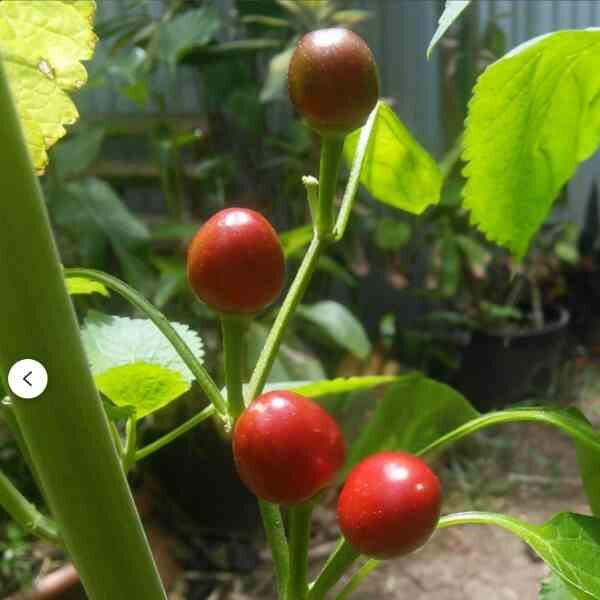
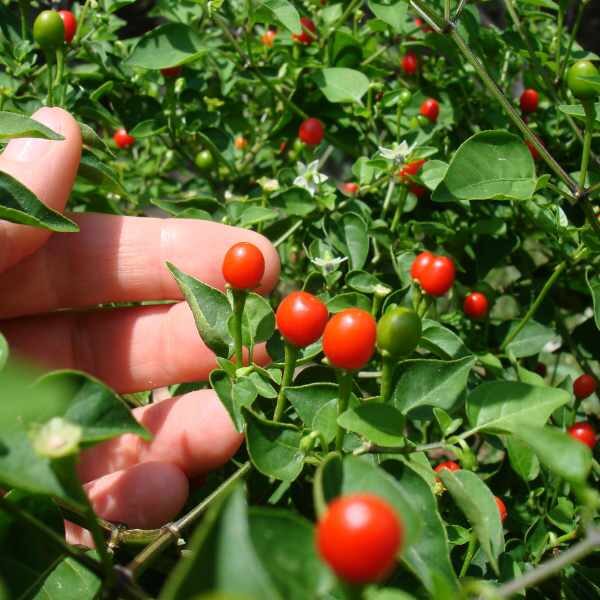



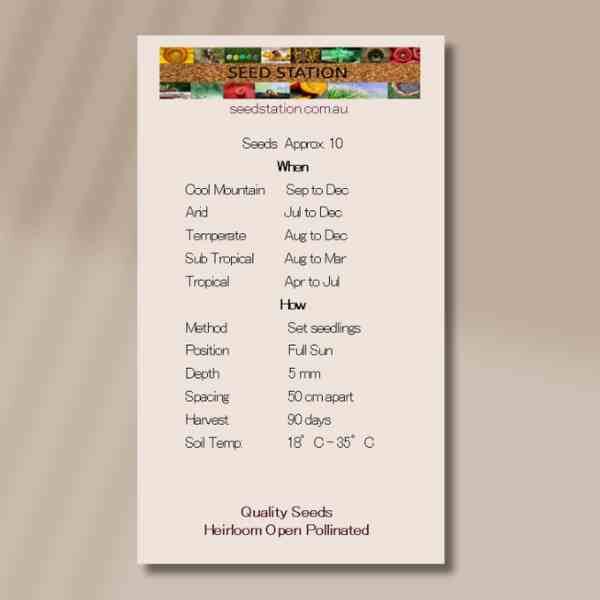
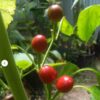

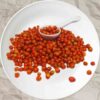
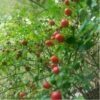
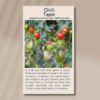



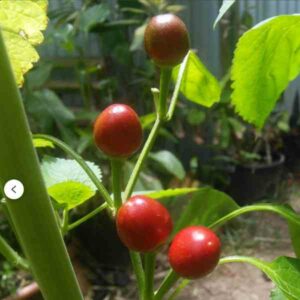
Reviews
There are no reviews yet